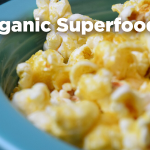A GMO Labeling Law Story
Many of you may have heard about the Vermont GMO labeling law that passed two years ago and taking effect this week, but not many can tell you how it started and why we are celebrating a victory in the good food movement.
How it all started
In 2011, organic farmer and author, Will Allen helped form a coalition to label GMOs in Vermont. The name of the coalition was called Vermont Right To Know GMOs. As a consultant I was fortunate to be a part of the Vermont coalition along with the following groups:
- Rural Vermont,
- Vermont Public Interest Research Group,
- The Vermont chapter of the Northeast Organic Farmers Association,
- The Environmental and Natural Resources Law Clinic (at Vermont Law School),
- Business for Social Responsibility,
- Cedar Circle Farm
After three years of grassroots activism, we found success in 2014. Utilizing social media education campaigns, endless testimony, targeted ads, and constantly lobbying the attorney general, legislators, and the Governor, we had won 28-2! When the final vote was cast in the Senate, seven Republicans and two libertarians voted with us. The public was overwhelmingly with us as well. In two public hearings, more than 200 Vermonters testified in favor of the bill, and not one person testified against it. Numerous polls over the three-year effort showed 90% of Vermonters repeatedly requested mandatory GMO labeling. Even National polls showed year after year, that Americans on all sides of the political spectrum overwhelmingly stated they wanted GMO food to be labeled. States have responded to their requests with over 30 states that have attempted to label GMOs. Unfortunately, only 3 have been successful. Connecticut and Maine passed laws, but they had “trigger clauses.” These trigger clauses made labeling contingent on other bordering states passing their GMO labeling, before their law would take effect. Vermont’s success came after failing twice. GMO labeling was quite the buzz in Vermont by late 2013. We experienced a rise in consumer and legislature awareness due to our education campaigns. Without consumer support, we would not have been victorious in Vermont. Many of the legislatures told the coalition they voted in favor of GMO labeling due to pressure from constituents who supported our GMO labeling law.
Why GMO Labeling?
64 countries have already passed GMO labeling laws, including China, South Africa, Kazakhstan, Russia, Turkey, Saudi Arabia, Vietnam, Slovakia, and Senegal. The same food companies blocking American’s right to know, make the same products without GMO ingredients for those countries who have banned GMO ingredients. If these countries have labeling, why can’t the U.S.? Some criticism has been passed down from consumers about the GMO labeling strategy. After all 38 countries have banned GMO foods. Since all we were asking for is a label, the U.S. seemly started being coined as the only country that wanted to “ban GMO labeling.” But, one thing to note is that GMO labeling was also the first step that all other countries took in order to let the marketplace decide while governments awaited more research that in some cases led to bans. It does appear strange that we know how much sugar is in our food but we don’t know if that sugar was genetically engineered to withstand high amounts of chemicals. We know how much fat, salt and calories are in our foods. We also know if foods contain dangerous aflatoxins from peanuts and other nuts and we know if there are sulfides in our wine. We know because of hard fought labeling battles. But, why don’t we know if GMOs are in our food?
Misinformation Campaigns and Legal Challenges
The chemical companies have tried to convince the public and various health agencies that GMOs are safe. Yet, more than 300 scientists signed a letter warning that the safety of GMO foods is not settled science. Since there have not been labels on GMO foods, and the GMO food corporations refuse to inform customers if their food contain GMOs, consumers who might get sick from GMO foods have no way of telling their doctor what they ate that made them sick. Labeling provides transparency to all consumers so the every American can make an informed choice.
The various GMO laws in each state were written by the same legal team, in hopes of creating a national standard that food producers could easily comply with. The opposition continued to outspend the “Right To Know,” campaigns. They claimed that GMO labeling would create chaos by being a “patchwork,” of state laws that would cost food companies millions to comply. Note, that these companies were already making the same products without GMOs, or they provided GMO labeling other countries. And to date, not one company has raised their prices on GMO labeled food. The anti-labeling lobbies repeated these tactics from state to state. We saw the patterns, and witnessed their success at the demise of consumers right to know about GMOs.
Before Vermont Governor Peter Shumlin signed Act 120 into law, Monsanto and the biggest food lobby in the world, the Grocery Manufacturers Association (GMA), threatened to challenge the bill in court. But we were prepared. In fact, $1.5 million was earmarked in the bill to pay for the imminent legal defense. And like we predicted, Monsanto and the GMA responded by filing suit, claiming the new law violates the companies’ right to free speech. The GMA stated that: “Act 120 imposes burdensome new speech requirements — and restrictions — that will affect, by Vermont’s count, eight out of every ten foods at the grocery store.” They went on to assert, that the sole authority in the country over food safety and labeling requirements, is the U.S. Food and Drug Administration (FDA). Currently, the lawsuit is in the second circuit, therefore the outcome can go either way. In 2014, we had the initial victory in Vermont, but there was still two years before the bill became law. The bill was written that it would go into effect this week, on July 1, 2016.
Meanwhile from 2011 to 2014 our allies in California, Washington and Oregon were unable to pass similar GMO labeling laws, due to an outpouring of money from the chemical and junk food companies. These paid media blitzes included: radio spots, and direct mail flyers. Even Google ads were blasting voters with fears about GMO labeling raising the cost of food “$400 more per year.” They spent so much money, that they literally bought the airwaves and created some of the most successful misinformation campaigns political analyst had witnessed. In these three states, despite being outspent more than 5 to 1, the ballot measures lost by very narrow margins.
The tactics from the junk food industry didn’t stop with lawsuits against the state of Vermont. The next fight happened Washington D.C. Special interests groups introduced, “The Safe and Affordable Food Care Act,” dubbed The DARK act by American consumers. This act would have revoked states rights and continue to keep consumers in the dark about GMOs in their food. Consumers from all over the U.S. called in to stop the DARK act and were successful. Unfortunately it wasn’t the end.
The newest version of a DARK act has reared its ugly head. S. 764 and is being sold as a “compromise” bill to Senators, that will serve both organic and junk food lobbyists. However, upon deeper analysis this law doesn’t serve anyone including the organic community and especially not consumers. As usual the only one that wins if this DARK act is passed is the large corporations that lobbied for it. Even the FDA announced, that if passed, S. 764 would not cover labeling most GMO foods. How is this being sold to us as a labeling law? We cannot disregard state GMO food labeling laws, only to replace them with laws full of special interest loopholes that benefit solely the junk food and chemical companies. A meaningful national standard for mandatory, on-package labeling is what we should support. It’s what is best for farmers, best for the marketplace and best for consumers. The marketplace is already labeling products all over the country in compliance with the Vermont law. Several companies such as Campbell’s, Con Agra, Pepsi, Frito-Lay, Nestle, Mars and General Mills’ products are already labeled on supermarket shelves.
 Why would a food company label their GMO foods for only one state? The answer is they won’t and they haven’t. Consumers are seeing these products all over the U.S. The hope is that Vermont’s law will force a federal standard and the food and chemical companies will stop fighting to keep us in the dark. View U.S. Senators Jeff Merkley (D-OR), Patrick Leahy (D-VT), Jon Tester (D-MT), Bernie Sanders (I-VT) and Richard Blumenthal (D-CT) discussing the current DARK act and why they support GMO labeling.
Why would a food company label their GMO foods for only one state? The answer is they won’t and they haven’t. Consumers are seeing these products all over the U.S. The hope is that Vermont’s law will force a federal standard and the food and chemical companies will stop fighting to keep us in the dark. View U.S. Senators Jeff Merkley (D-OR), Patrick Leahy (D-VT), Jon Tester (D-MT), Bernie Sanders (I-VT) and Richard Blumenthal (D-CT) discussing the current DARK act and why they support GMO labeling.
Raise Your Voice
So what can you do to help GMO labeling become a national standard?
- Call your Senators at 877-796-1949. Tell the Senate they should take up S. 2621, the Biotechnology Food Labeling Uniformity Act, introduced by Senator Merkley. *
- The second thing you can do is to share this post! Vermont deserves a victory and so do all consumers. You have a right to know what you’re eating and feeding your families. We need more Americans to know that they are being denied this fundamental right.
- Third, to avoid GMOs, choose certified organic food. Organic always means non-GMO! If you can’t find organic look for non-GMO project verified products. Keep reading those food labels in your grocery stores. You’ll likely see labels on some familiar processed foods that read: “produced with genetic engineering.”
*Status: Since this article was written the Senate voted in favor of blocking our right to know about GMOs. To see the Senators that voted to keep you in the DARK, review below.
And lastly remember these words from Tae Yun Kim, “To make a change, you must be: willing to commit, willing to change, willing to have an open mind, and willing to take action!” Regardless of the outcome of these initial struggles, Americans are waking up. They want to know why they are getting sick and developing allergic reactions to foods. Americans want clear information on the foods they buy and feed their families. The movement for transparency is just getting started, and Americans won’t stand for being kept in the dark now that they know GMOs are in the food supply. They say that knowing is half the battle and many of us know that GMOs are in our food supply and how to avoid them. So when you’re feeling defeated, just remember that in so many ways, we as consumers are already winning the Right To Know battle and rest assured we will be victorious if we all come together. Keep sharing!
*Editors note- this article has been updated so the information is current. The original article posted on July, 5th in an effort to stop the Senate DARK act vote was edited for I Am Zuri. The original is available on Naturally Savvy here.






Fantastic article. Thank you!